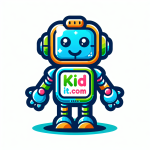Identifying Misinformation- A Lesson in Digital Literacy
In today's digital age, information is readily available at our fingertips through the internet. While this access to information can be incredibly beneficial, it also comes with its challenges, particularly when it comes to identifying misinformation. With the rise of fake news and misinformation spreading rapidly online, it is more important than ever to equip ourselves with the skills necessary to discern fact from fiction. This is where digital literacy comes into play.
At our tech education and IT education organization, we understand the importance of teaching children how to navigate the vast online world safely and responsibly. By offering resources and education on digital literacy, we aim to empower children to critically evaluate the information they come across online.
One of the key skills taught in digital literacy is the ability to identify misinformation. Misinformation refers to false or inaccurate information that is spread unintentionally. This can include rumors, hoaxes, and misleading content that can be easily mistaken as true. With the prevalence of social media and online platforms, misinformation can spread like wildfire, making it crucial to be able to spot it before it causes harm.
So, how can we teach children to identify misinformation? Here are a few tips:
1. Check the source: One of the first things to do when encountering information online is to check the source. Is the information coming from a reputable and credible source? Look for signs of bias or agenda that may indicate that the information is not reliable.
2. Cross-reference information: To verify the accuracy of the information, encourage children to cross-reference the information with other sources. If the information is true, it should be able to be confirmed by multiple reliable sources.
3. Look for evidence: Misinformation often lacks evidence to support its claims. Teach children to look for evidence and to question information that is not backed up by credible sources.
4. Fact-checking tools: There are several fact-checking tools available online that can help verify the accuracy of information. Teach children how to use these tools to determine whether the information they come across is true or false.
5. Critical thinking: Encourage children to think critically about the information they encounter online. Teach them to ask questions, evaluate sources, and consider the implications of sharing misinformation.
By incorporating these tips into our tech education and IT education programs, we are helping children develop the skills they need to navigate the digital landscape effectively. In a world where misinformation is prevalent, digital literacy is more important than ever.
As we continue to advance in technology, the ability to identify misinformation will only become more crucial. By providing children with the tools and knowledge necessary to discern fact from fiction, we are empowering them to make informed decisions and contribute positively to the online community.
At our organization, we are committed to promoting digital literacy and providing children with the skills they need to succeed in the digital age. By offering tech education and IT education resources, we are equipping children with the tools necessary to thrive in an increasingly digital world.
In conclusion, identifying misinformation is a critical lesson in digital literacy. By teaching children how to discern fact from fiction, we are helping to create a generation of informed and responsible digital citizens. Through our tech education and IT education programs, we are working towards a future where children are equipped to navigate the online world confidently and effectively.


leave a comment